Rukka Gore-Tex jackets - the definitive guide
Published on: 14 November 2023
CLICK RUKKA GORE-TEX JACKETS TO SHOP WITH FREE UK NEXT DAY DELIVERY
In this review we are going to look at all the Gore-Tex suits that are available from Rukka in 2023 and 20024. At the time of writing, 2024 is just around the corner. But what we can tell you is that we have seen the new Rukka collection for next year; and there are no new Gore-Tex outfits coming through, although there is one without Gore-Tex. And so what that means is that the range we are going to be discussing today probably won’t change until a least the spring/summer of 2025.
In the interests of keeping things as sweet and short as we can, we are not going to go into great detail on any of the models. We, and other people, have made videos about most of the pieces that we feature in this video. What today is about is trying to help people work out which Rukka outfit is going to work best for their particular needs.
I would make one other point here. We are reviewing Rukka’s jackets here, but each has a matching pant, so every jacket forms part of a suit. But reviewing nine different pants would be a bit dull, so we haven’t said anything about the matching lower halves here. Usually, a pant will match a jacket in most key respects, but if you want all the fine detail visit the website. Anyway, before we get into the jackets, let’s talk a bit about Rukka’s gear, because it won’t be for everybody.
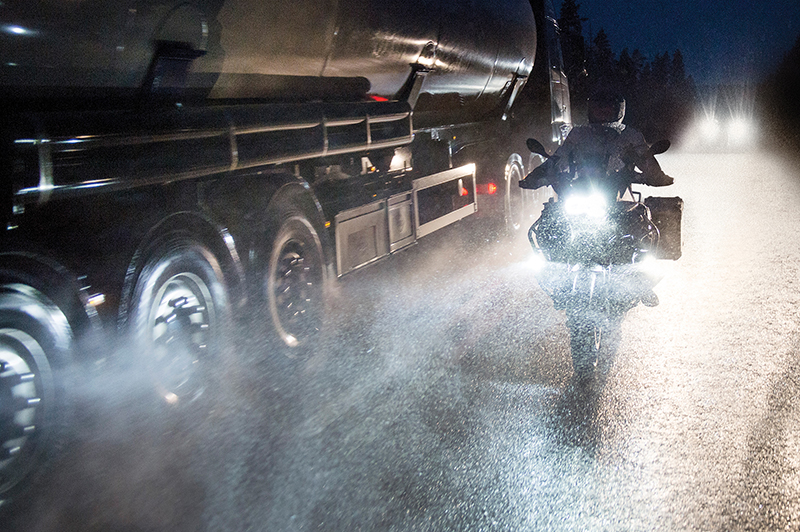
Rukka is, in essence, a brand that is aimed at Northern European riders. They do produce suits, and one in particular, designed potentially for warmer climes, but the wind, the rain, and the cold are the natural habitats for a Rukka outfit. There are those who would try and convince you that when you’re crossing the Sahara or the Mojave, your best friend will be a well-vented, laminate suit. But let me be clear, anybody who tells you this is trying to sell you snake oil. They are trying to persuade you that they have created the ‘holy grail’, the suit that will keep you comfortable in every conceivable, climactic condition. But what they are offering you is a mere chimera. The suit that works in all conditions simply does not exist. If it did, you would all be wearing it. And I would be rich.
The narrative from these people is that a well-vented laminate suit will keep you bone dry in the event of heavy rain. And it will. The manufacturers claim further that the membrane will serve to keep you warm. And to a degree it will. The membrane will combat the effects of the wind chill factor, and will also serve to insulate body heat. Of course, for the coldest conditions you will still need an insulating mid-layer, but wear one inside your laminated jacket and you will indeed stay protected from the worst the elements can throw at you. But it is a myth that a well-vented laminate jacket can help you stay cool in the hottest of conditions.
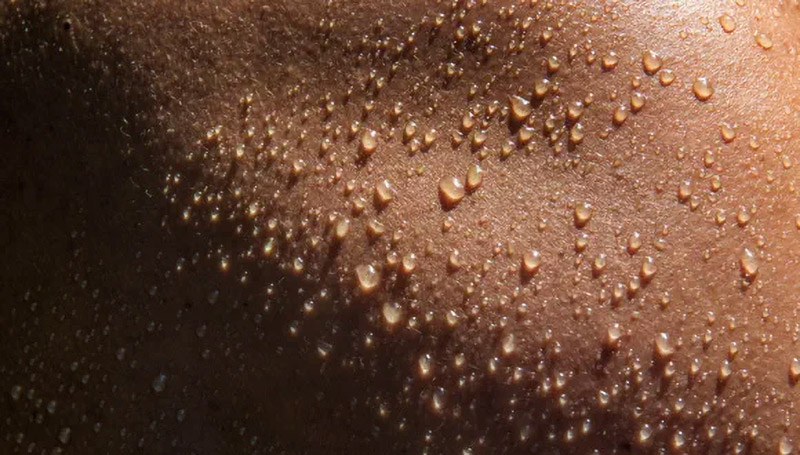
No amount of venting can overcome the problem that is created when you wear a waterproof membrane next to the body. When we get hot, we sweat. This is the body’s natural mechanism for cooling itself down. This sweat comes to the surface of the skin. In order for an ‘evaporative cooling’ process to take place, that sweat has to become a vapour. This change in states from liquid to gas requires energy. And the generation of this energy draws heat from the skin. Thus cooling the body down.
Now we sweat all the time. And in normal conditions, say up to a temperature of up to around 20 degrees, a membrane will be able to handle the level of vapour transfer that is required. If you’ve got lots of well-placed vents, and are riding at a reasonable speed, on a bike without a fairing, you would probably be comfortable at a temperature of maybe up to 25 degrees.
But when it gets really hot, getting closer to 30 degrees, or if you are working hard off-road, you will be generating so much sweat that it will overwhelm the membrane. The vapour won’t be able to escape. The sweat will stay in a liquid state. There will be no cooling effect. And you will just get hotter and hotter.
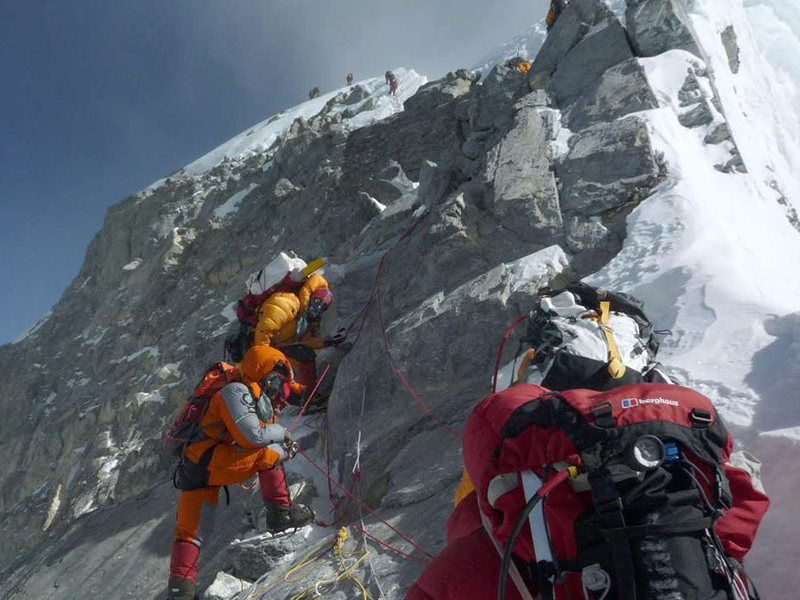
If you are going to be riding in the warmest conditions, you will need to adopt a layering approach, such as would be familiar to any walker, any climber, any sailor, or anybody who has been in the military . Wear something totally breathable to allow your skin to breathe. Put on an insulating, mid-layer when it’s cold. Put a waterproof on the outside when it rains. Yes, you may have to stop to put things on, and take things off. But the result is that you’ll always be as comfortable as it’s possible to be. The reality is that we can add layers to a breathable garment to stay warm, and to stay dry. But there’s absolutely nothing we can do to a waterproof garment to help you stay cool in the heat.
In other words, do not to buy into the hype. No Rukka suit will do everything. There is no Rukka four-season, Gore-Tex suit. Rukka makes brilliant gear, and we are going to take a few moments to explain why, but don’t believe everything you hear. If you ride through the winter, or commute all year round, it may well be that Rukka is your best option. But if you’re a weekend rider who goes out on nice days on the weekend, with perhaps one or two overseas trips a year, you probably don’t need Rukka. If you like to tour in hot places, the same applies. Rukka does some things very well indeed, but it simply isn’t right for everybody.
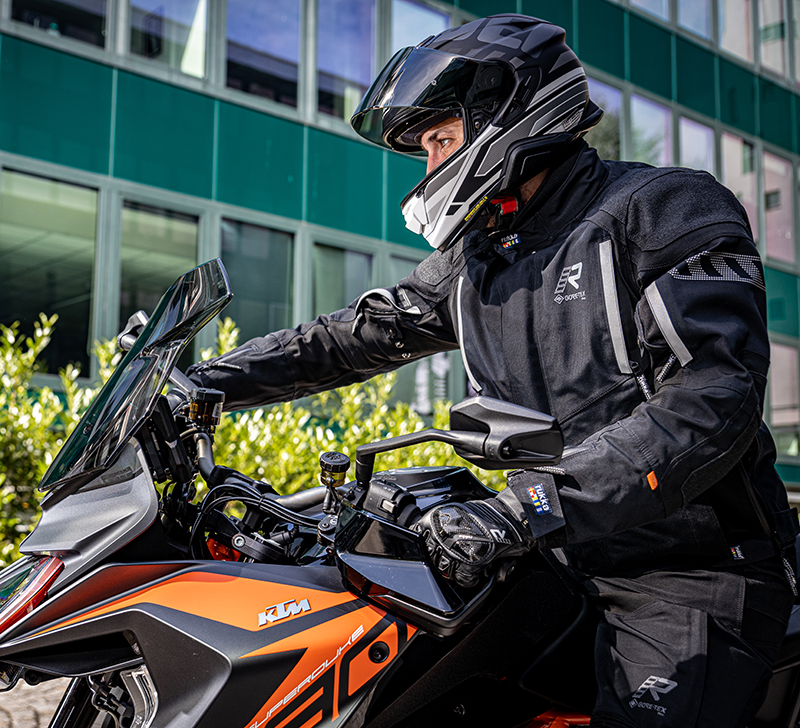
Before we go on to look at the nine jackets that are currently in the Rukka Gore-Tex range, and having spoken about the reasons you might not need a Rukka outfit, we wanted to talk about why you might want to go for the Finnish brand because, in our view, their gear is still something quite special.
Rukka is not the most upscale, technical brand in the motorcycle market by accident. Rukka has been making high-end, winter gear since the early eighties. They weren’t the very first apparel producer to work with Gore, but between them Gore and Rukka worked out how to make motorcycle clothing waterproof. How to keep riders dry from the outside, but importantly how to keep them dry on the inside, because in the coldest conditions this can be far more important. And that’s because if we do get wet inside a jacket we will lose body heat 20 times faster through a wet environment than we would do through a dry one.
Of course, Rukka is also the premier name in laminated motorcycle wear. They have been making laminated gear longer than anybody. In fact, the development of laminated bike clothing was, again, very much a joint undertaking between Rukka and Gore. In the early days, there were mistakes. There were suits that proved not to be properly waterproof. There were suits that weren’t sufficiently breathable. But over time, the methods were refined to the position we have today where one can be pretty confident that a laminated membrane in a Rukka suit is going to keep you totally dry from both the inside and the outside.
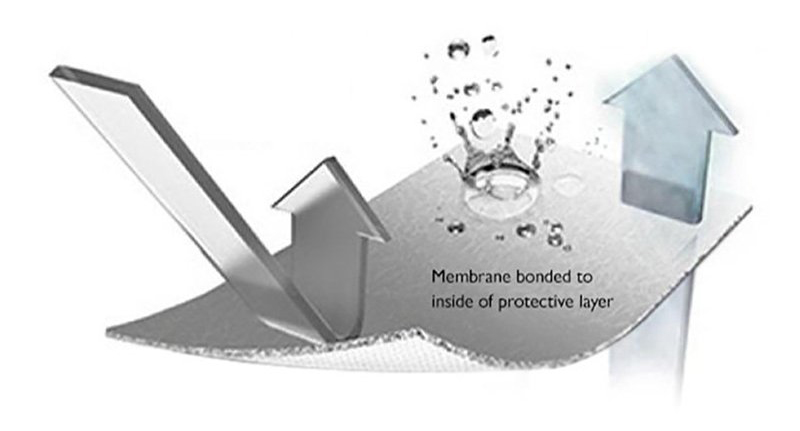
But, of course, a motorcycle suit is about a lot more than just staying dry.
Protection is, for many people, a major concern. Now some people think that the only important consideration is the EN17092 rating of a garment, but that’s because they don’t understand what EN17092 is about. The standard is really just an abrasion test, and what normally prevents injury in an accident is not the abrasion resistance of the outer fabric of our jacket or pant, but rather the armour with which it comes fitted.
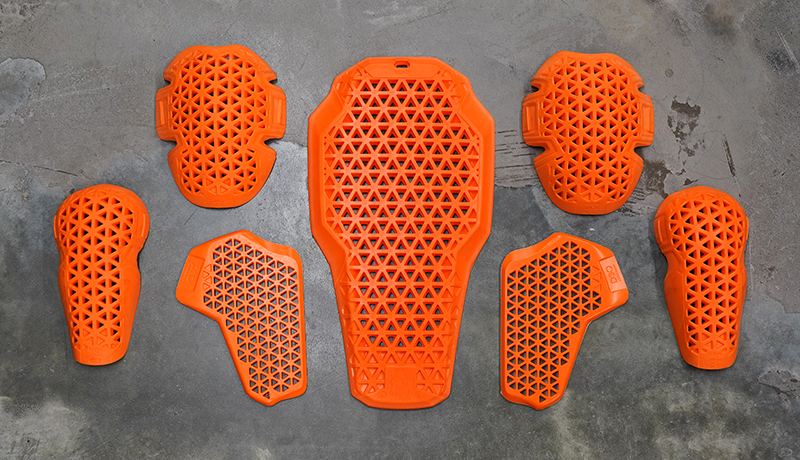
Whatever the EN17092 rating of a Rukka garment, it will always be one of the safest products you can ride in. And that’s because Rukka’s suits come with huge, Level 2 armour throughout. Many AAA suits are equipped with tiny Level 1 armour. Rukka goes for AA or A rated fabrics, because they realise the need for breathability and comfort, but they equip their gear with the biggest and best armour. And in the real world, this makes for much more protective riding wear.
There is another issue here. EN17092 only measures the abrasion resistance of the outer shell of a garment. But armour plays a huge part in abrasion resistance. Nobody, I would suggest, has ever seen a piece of Rukka armour that has worn through in an accident. Which is why an A-rated Rukka suit will still be way more abrasion resistant than most AA-rated suits; and in many cases more abrasion resistant than many AAA-rated ones.
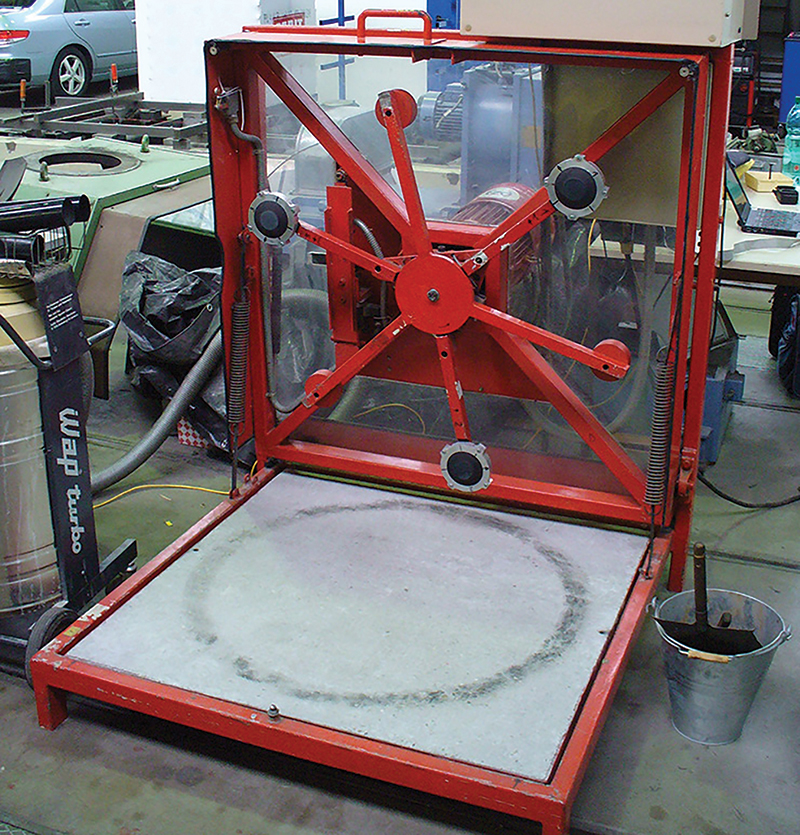
Bottom line? If you have an accident, your chances of walking away unscathed are better if you wear Rukka. We have seen the results of dozens of accidents where the riders were wearing Rukka. This is the brand that everyone trusts. And that includes, of course, the Police.
Now, lets talk about about prices, warranties, and so on.
Rukka gear is not inexpensive. There will always be cheaper options. But so confident are Rukka of the quality of the construction of their gear that they offer a six-year warranty, provided you register your suit with them within three months. If you don’t, it’s five years.
Now what a lot of high-mileage motorcyclists do is to take the full price of a suit, and divided that amount by the duration of the warranty, to give them an annual cost for the guaranteed life of the jacket. So, let’s say you pay £2,400 for a Rukka suit. Divide that by six; this gives you a cost of £400 a year for the guaranteed life of the suit.
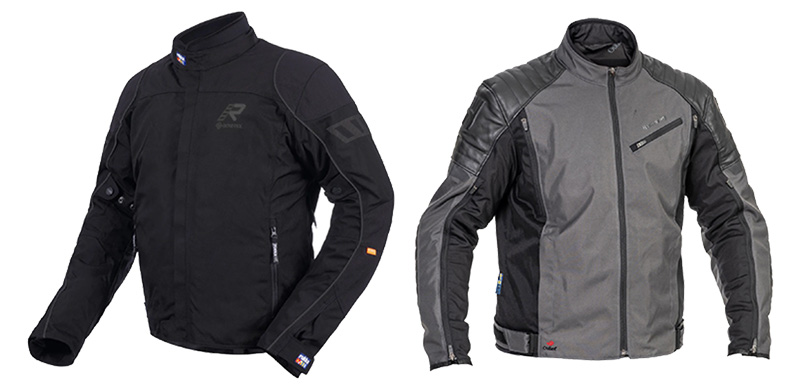
Now £400 a year does not seem bad for one of the best suits that money can buy. Just over a pound a day. But contrast this with a suit from somebody like Halvarssons. Like most brands, Halvarssons offer a two-year warranty. You will probably get yourself a decent Halvarssons laminated suit for £1200. It won’t be as good as a Rukka, but it will tick most of the same boxes. But divide the £1200 into the two years, and you end up with a cost of £600 a year. Of course, the Halvarssons suit may well last longer than two years, but if it starts to leak 25 months after you buy it, you will have no choice but to replace it.
If the up-front cost is the issue, you could always take out 12 months interest-free credit. And we suggest this because the benefits of riding in a Rukka suit are such that it would be a shame to let the buy-in cost be the deciding factor.

Remember also that, with a Gore-Tex Rukka suit, you will get Gore’s lifetime waterproofing warranty. Simply put, a Gore-Tex Rukka suit is guaranteed to keep you dry. For ever and always! In 2024, for the first time Rukka is working with a non-Goretex option to provide a laminated jacket. The Rukka Kemi is the first non GTX laminated suit they are offering and we are interested to see how this new direction progresses.
Anyway, that’s the Rukka sales pitch over and done with.
Let’s now try and help you work out which outfit will be the best one for you!
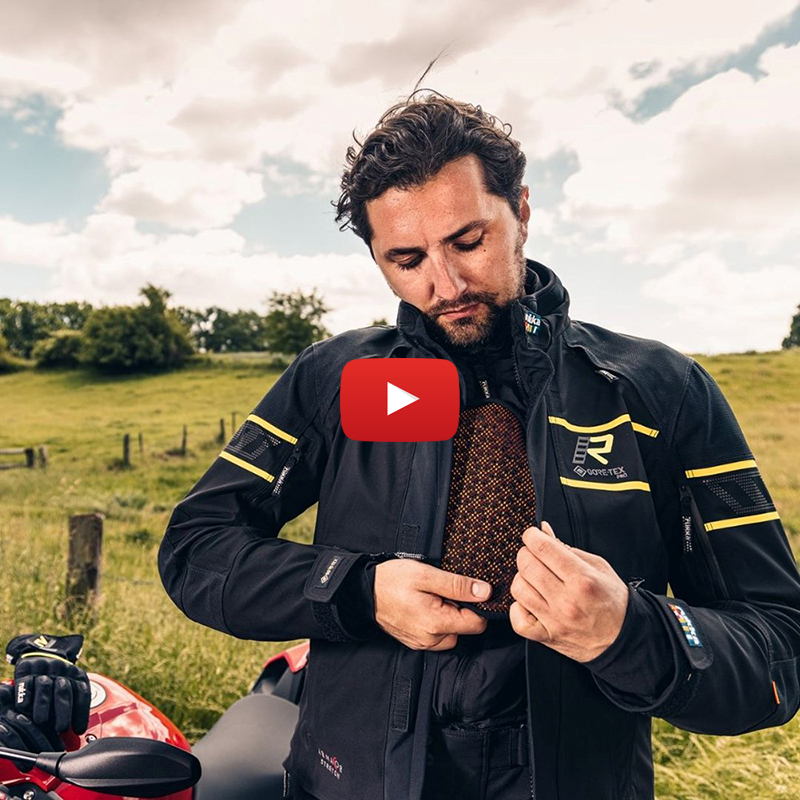
As far as we’re concerned, the Rukka Nivala 2.0 is the brand's top-of-the range jacket. The Kingsley is a bit more expensive, and has an AA rating, as opposed to the Nivala’s single A, but we take the view that because of its huge L2 armour the Nivala is as protective as any non-Rukka waterproof suit on the market. And, in our view, we’d rather be comfortable for all our rides than wear a jacket that, although technically more abrasion resistant, will be less comfortable. Accidents happen, but if you’re comfortable on the bike, and less fatigued, you’ll be in a better position perhaps to avoid having an accident in the first place.
The Nivala jacket has a 3-layer Gore-Tex, laminated membrane, but what makes it so easy to wear is the stretch that is built into the outer chassis. It makes the Nivala far and away the most comfortable 3-layer laminated jacket that money can buy. You get all the huge L2 armour that I’ve already mentioned, and a L1 chest protector too. Venting is okay; as good as it gets for a Rukka touring suit, but Rukka is no Klim in this regard. Much over about 25 degrees, and you’ll be wishing you wore something else. One of the stand-out features of the Nivala is its down-filled inner jacket. It doesn't attach; you simply wear it or you don’t. It is super warm, and looks good off the bike. (If you’ve got your own insulation solution, we’ll buy the liner back, lopping some £200 off the jacket’s price).
This is the suit that just about every policeman in the country would prefer to ride in. Unfortunately, some forces make their riders wear heavy and uncomfortable leather jackets, whilst others simply cannot afford the Nivala. That’s a shame because the Nivala is simply the best high-mileage, waterproof outfit out there. And one of the most protective too!

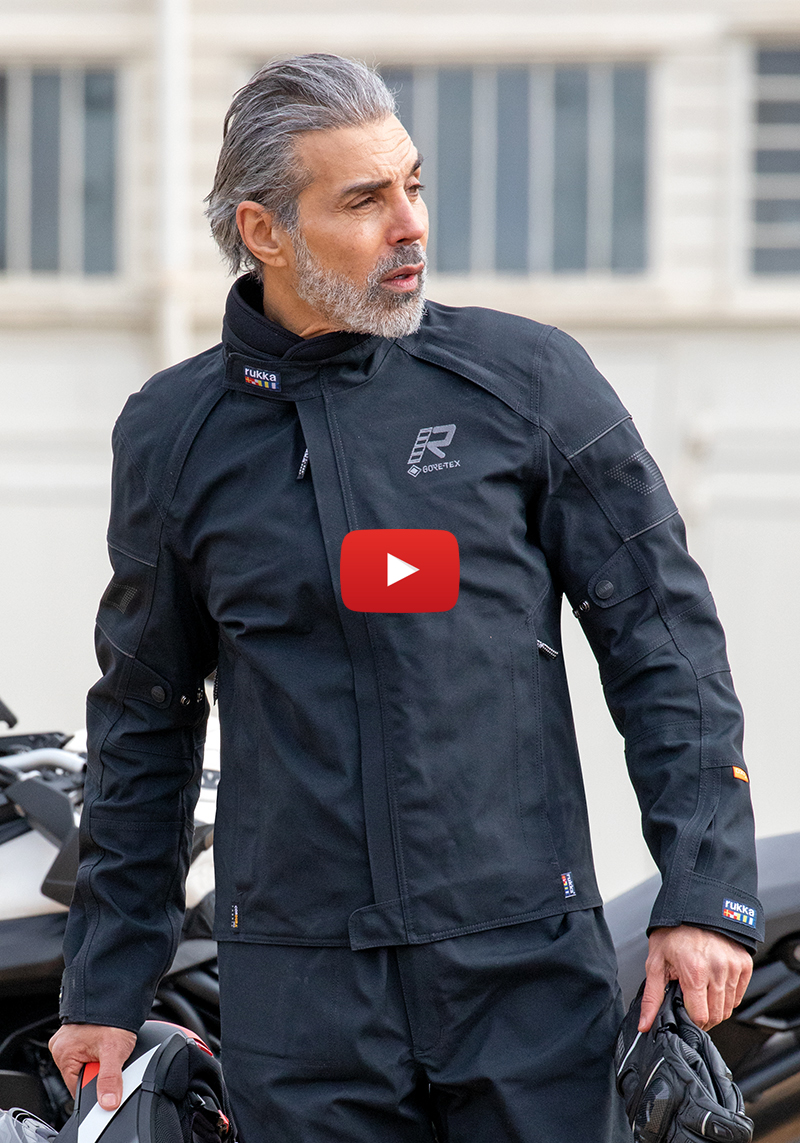
The Kalix was always designed as an entry-level suit. The first iteration of it was horrid; this one is better. It is constructed using a two-layer, laminated membrane. And it is true that the price allows those who might not normally have been up for a Rukka suit to try one out. Obviously waterproofing can be taken for granted. You get reasonable venting. And you get Rukka’s huge L2 D3O in the shoulders and elbows, but there’s no back protector as standard. And that is where the problem starts.
You see, in order to bring the Rukka Kalix 2.0 in at a price point, sacrifices had to be made. There’s no back protector. There’s no thermal lining. No storm collar. No GTX cuffs. No zips at the ends of the sleeves, and so on. In other words, you don’t get many of the things that make riding a motorcycle a bit less uncomfortable.
The Kalix does have a role to play in the Rukka range, but it is quite a basic bit of kit. We are also not so keen on the fit. It is boxy, contains no stretch, and is devoid of much by way of adjustment. But this is still the jacket that the Met. supplies to its riders. The Kingsley is the suit that was developed for the Police, who wanted a Rukka with an AA rating. Unfortunately, it proved too expensive for most forces. Which is why the Met. ended up with the much cheaper Kalix. The Kalix was actually never tested to EN17092. Rukka found another way to get CE approval, although with its 600 denier shell, and no reinforcements on the elbows and shoulders, there can be no doubt that the Kalix would only ever achieve an A rating. But with all the L2 armour in place, we have no issue with this.
What we are excited about, though, is that in 2024 there will be a new laminated jacket in the Rukka firmament. Called the Kemi, it’s got all the bells and whistles; it’s like a two-layer Nivala, complete with stretch built into the chassis. It will be priced like the Kalix, and we think it’ll be a winner. It’s not Gore-Tex, but you will still get a six-year warranty.

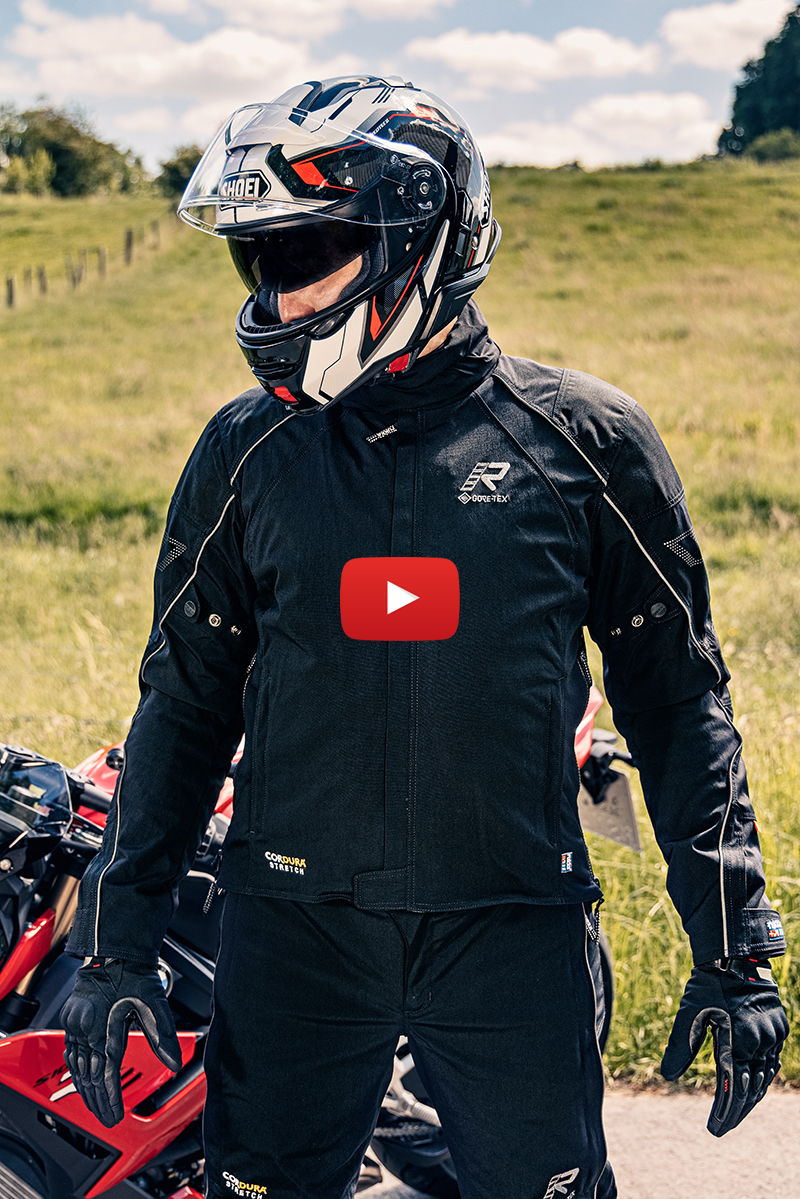
Rukka has made its name on the back of laminated membranes. They are what Rukka is famous for; and for those who do big miles, all year round, and in all weathers, then laminate may well be the way to go. But that does not mean laminate is for everybody. A jacket with a drop-liner membrane will be more comfortable, and warmer, and less expensive. If you’re a leisure rider who does between five and ten thousand miles a year, you will probably be better off with a drop-liner solution, because the chances of finding yourself in a situation where ‘wetting out’ is a problem are minimal. And the solution is simple. If you do occasionally find yourself in such conditions in a drop-liner garment, throw a waterproof on.
The Comfo-R is a drop-liner jacket, but what makes it so special is that the outer shell is infused with stretch in the way the Nivala is. In fact, one might credibly suggest that the Comfo-R is, in essence, a drop-liner Nivala. This makes it amazingly comfortable; in fact, it’s probably the most comfortable jacket in the Rukka range.
Of course, it’s got most of the other stuff you need. Reasonable, but not outstanding, venting. You get a full suite of Level 2 D3O, although not in the chest. There’s a removable 60g. thermal lining. And a concealed neck protector.
This is one of our favourite jackets here at Motolegends. If you think you need to go laminate, so be it, but many people who think they do, actually don’t. The Comfo-R is not for the 15k mile a year rider. Nor is it what you want to be wearing in thirty degree plus temperatures. But for the rest of us who avoid the rain when we can, but inevitably get caught in it from time to time, the Comfo-R is probably the best suit out there.

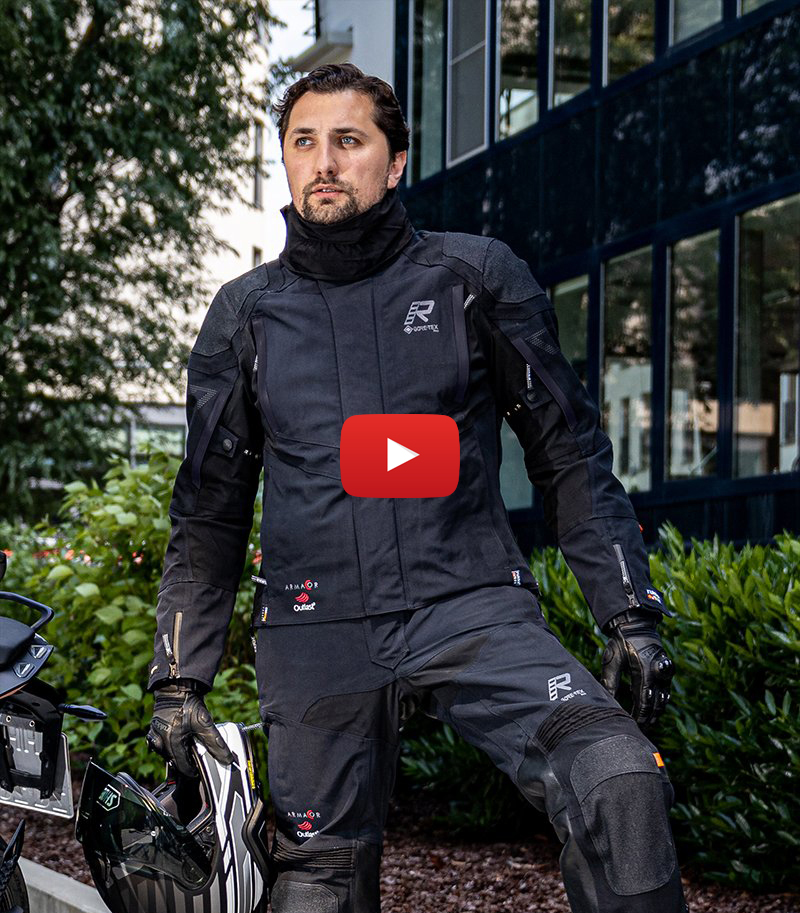
The Rukka Nivala is the suit that every Police rider would like to be issued with. But because the Police never really understood EN17092, and what it meant in terms of protecting riders, they told Rukka that they required an AA-rated suit if they ever wanted to be able to tender for contracts. And so that’s why Rukka developed the Kingsley.
The Kingsley is, in essence, the Nivala but with the stretch component removed, and this is important because Elastane slightly weakens a fabric. Take the stretch out, and you perform better in the EN17092 abrasion tests. Add some extra strengthening in the form of Keprotec on the shoulders and elbows, and you easily pass at AA.
In most other respects, the Kingsley replicates the Nivala. So you get a duck-down liner. L2 D3O throughout, plus a chest protector. Venting as good as it gets on a Rukka. GTX cuffs. A storm collar in the neck. And all the other goodies.
The trade-off is very simple. The Kingsley is notionally more abrasion resistant than the Nivala. It just isn’t as comfortable. Our view is that, with its huge armour, the Nivala is as protective as any road rider needs a suit to be. But that is not our choice to make. We vote for comfort. But that doesn’t mean that you have to.
Ironically, few police forces could afford the Kingsley, which is why the Met. Eventually went for the much cheaper, A-rated Kalix!

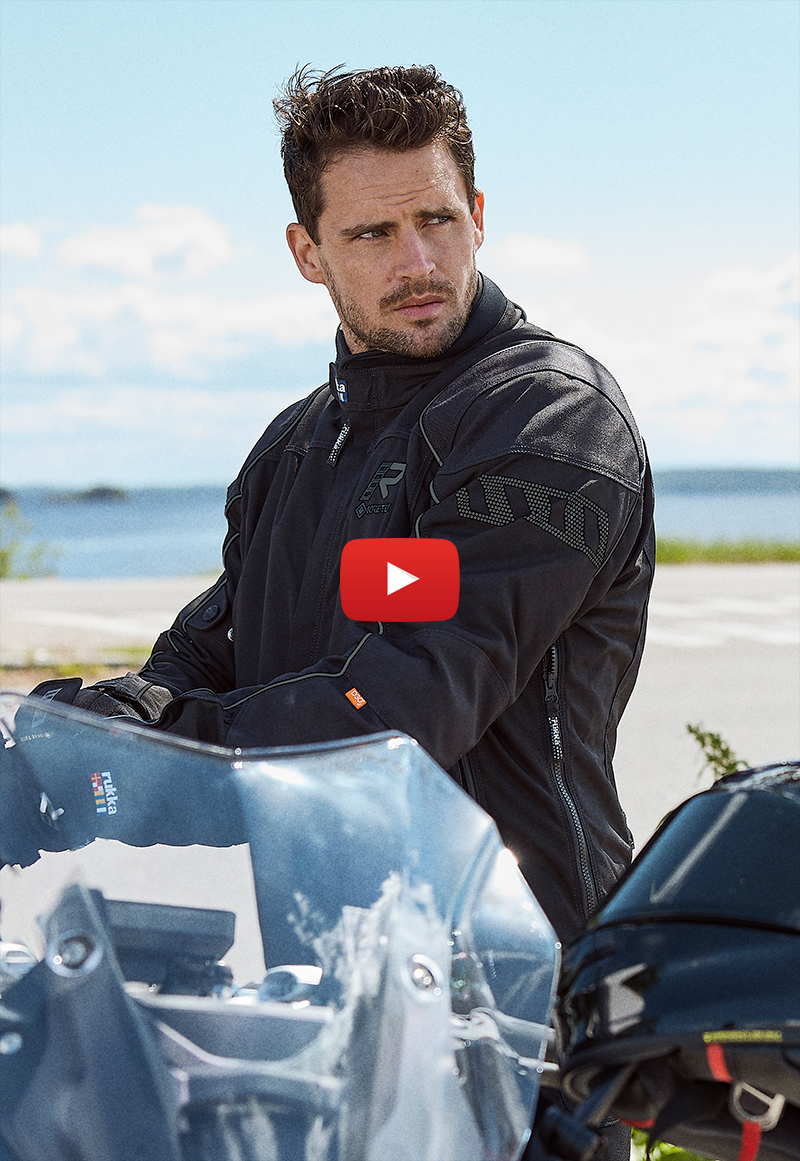
The Comfo-R is a drop-liner jacket. With stretch woven into its chassis, it’s supremely comfortable. But with all the misleading rubbish that is spouted about EN 17092, Rukka was concerned that the market would reject the Comfo-R because of its single-A rating, so they set out to create an AA-rated drop-liner outfit. That is what the Pathfind-R is; a Comfo-R with a higher level of abrasion resistance.
To achieve a higher rating under EN17092, Rukka removed the stretch from the outer fabric, and put 1500 denier overlays on the shoulders and elbows rather than the 500 denier overlays on the Comfo-R. But in most respects the two jackets are very similar. The Rukka Pathfind-R jacket is about a hundred pounds cheaper, but comes without a back protector. Add one in, and the prices are the same. Other than that, you get no storm collar concealed in the neck with the Pathfind-R, and no exhaust vents in the back. And that’s about the sum of it.
The choice is a simple one. Comfort vs abrasion resistance. I know what we’d go for, but some others might not.

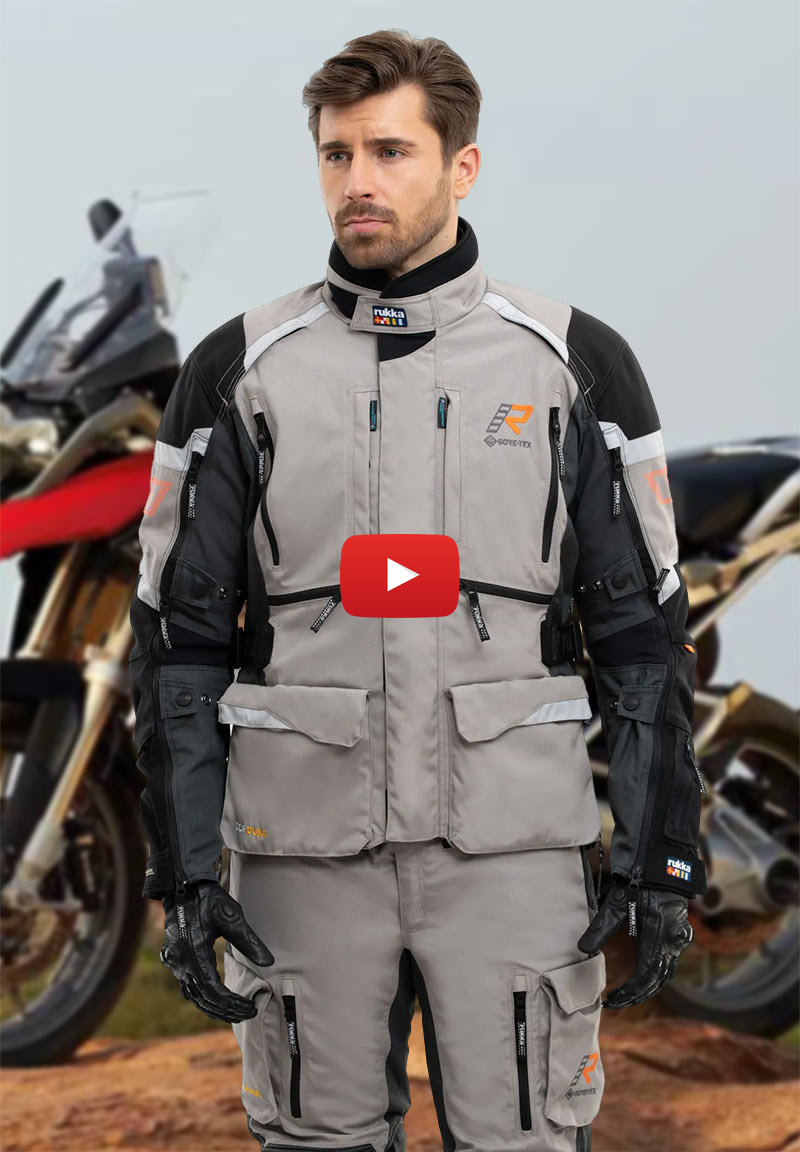
In our intro. we stated that Rukka is a Northern European brand and, as such, its jackets are more suited to the cold and the wet than the warm and the dry. And this, as a generalisation, is true. But Rukka has a right to try and take some market share away from Klim, and indeed in their range there are some outfits that have more of an ‘adventure’ feel to them
The Rukka Trek-R jacket is one. In concept, it’s most akin to Held’s Carese Evo jacket, in that it has a removable, waterproof liner. And so this is what we would consider to be a ‘proper’ adventure jacket, in the way that we wouldn’t consider one with a fixed membrane to be.
The idea with such jackets is that when you remove the membrane, the air can flow more easily through the outer chassis and, of course, the vents. If you’re working hard off-road, or riding in somewhere really hot, this is the kind of jacket you want. But what is interesting with the Trek-R, as it is with the Held jacket, is that the removable, Gore-Tex, waterproof liner contains stretch, so that it can be worn on the inside or the outside. You might keep it in for a shower, but if it really pelts down you’d probably wear it on the outside to prevent wetting out.
The jacket contains lots of stretch, and there are loads of adjusters; particularly important are those at the waist. You get lots of pockets and, as you might hope, there are vents everywhere you look. The fabric is a fairly lightweight 500 denier Cordura, but if you’re riding off-road abrasion resistance is not so important. Breathability and lightness are. There’s level 2 D3O armour in the shoulders, elbows and back. The jacket is A-rated but, as I’ve mentioned, abrasion resistance is not so important off road, as we tend to hit things rather than slide if it does go wrong.
Rukka may not have the name that Klim does when it comes to adventure riding, but ironically Klim doesn’t have in its range a ‘proper’ adventure jacket with a removable waterproof lining, like this one. A bit strange really!

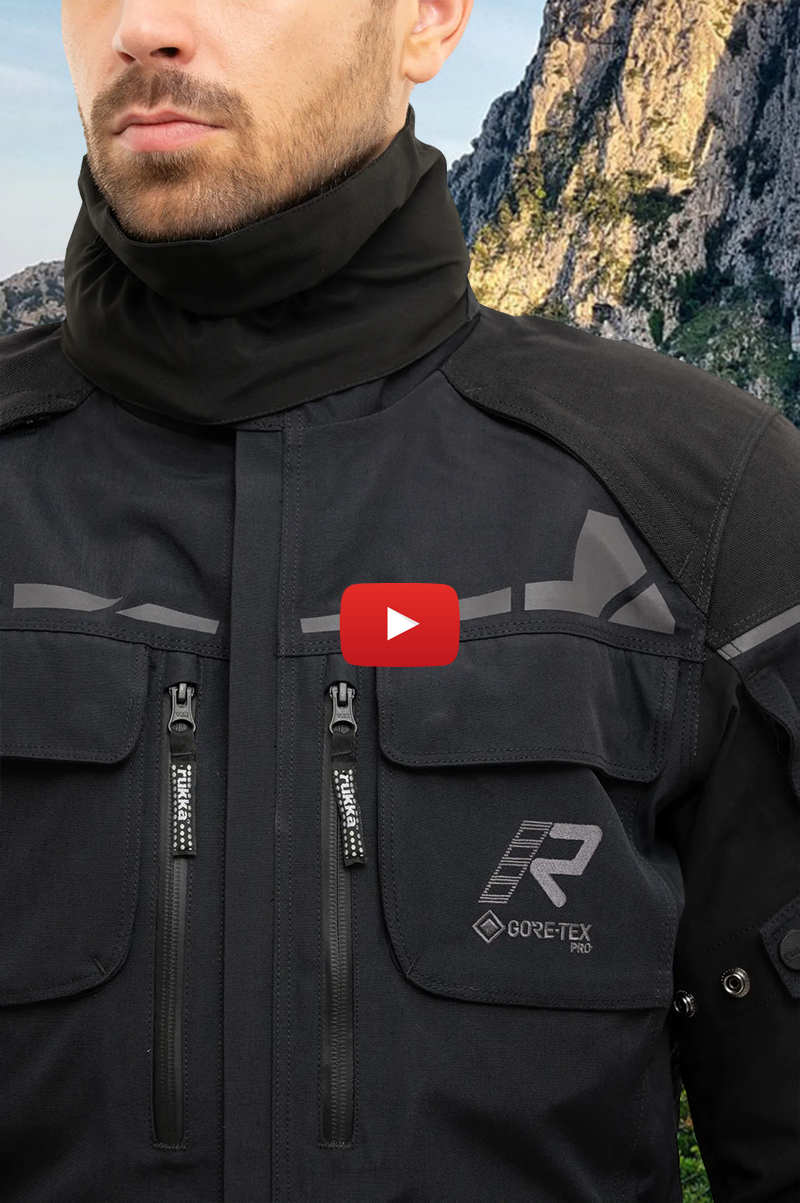
The Explore-R is Rukka’s version of a Klim adventure jacket, in that it comes equipped with a laminated membrane; in this case a three-layer Gore-Tex Pro membrane. Now a laminated jacket is what Klim would have us all believe is the best option for riding off-road, or in hot weather. We would fundamentally disagree. If you are working up a sweat, the last thing you need anywhere near your body is a waterproof membrane. It doesn’t matter how many vents you have, you’d be better off in something without a membrane. And so, for us, the Explore-R is really just a very waterproof road-riding jacket with excellent venting. Of course, with its pockets and central waist adjusters, the Explore-R has an adventure aesthetic, but really it’s a jacket for the adventure bike rider who rarely, if ever, strays from the black stuff.
The Rukka Explore-R jacket comes equipped with L2 D3O in the elbows, shoulders and back. You also get a Level 1 chest protector. You get 1500 denier Cordura overlays on the shoulders and elbows. The jacket is AA-rated under EN17092.
All the other stuff is what you might expect, so a concealed storm collar. Adjusters wherever you need them. Stretch where it helps. Loads of pockets. And as many vents as you could ever expect. The Trek-R could very much take the fight to Klim, but the Rukka importer is so unconvinced of this possibility, that he is bringing it in to the country in black only. Presumably for the GS-riding commuter who wants a jacket with lots of pockets to go with his peaked helmet and off-road boots!

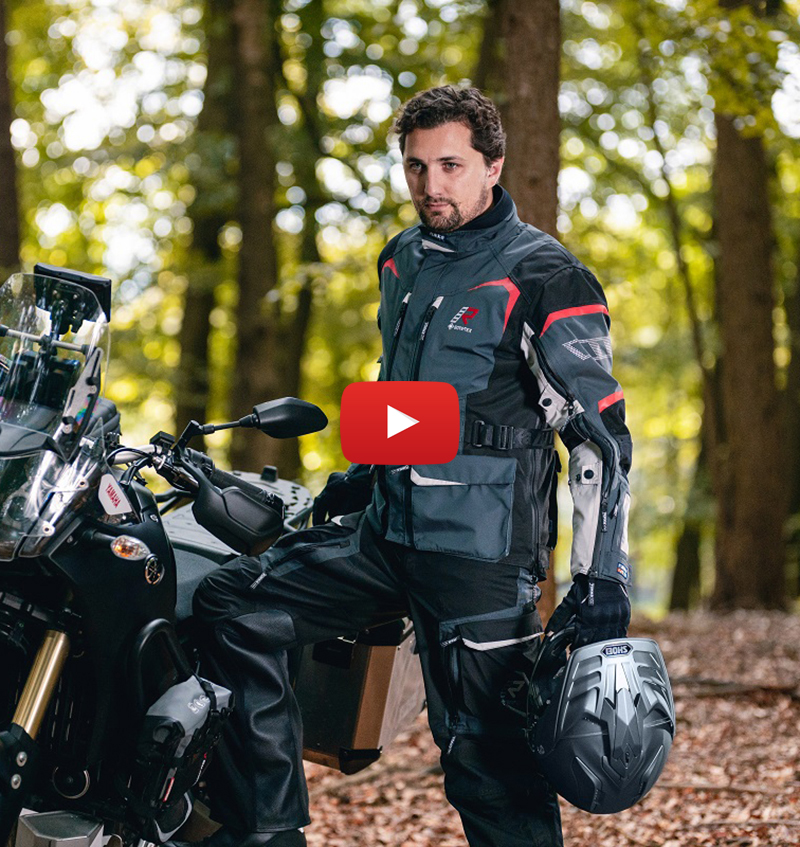
The Rimo-R is a bit of a hybrid. There’s nothing else quite like it. Let us tell you what we know, and what we think. First of all, it has an adventure look, obviously. It is longer than some jackets, has large pockets and a centre belt. It comes equipped with a two-layer, laminated membrane which, in our world, means that it is not a proper adventure jacket because, as we always bang on about, a membrane will reduce breathability, making it harder to sweat, and preventing the oncoming cooler air from reaching the body.
Now the Rukka Rimo-R jacket has lots of vents, but vents only serve to compensate for the problem of having a membrane in the first place. What we would normally say, therefore, is that such jackets are meant for road riders who merely want to adopt an adventure aesthetic. But the Rimo-R is not quite that jacket. Despite the membrane, Rukka really did produce this outfit expecting it to be worn off-road.
Certainly the loose and baggy fit would suggest this. But more importantly, the Rimo-R does not come with armour. Yes, it does have armour pockets, but it has been designed to wear with something like Rukka’s RPS AFT jacket; that is to say a body vest with armour. Obviously this is the best way of protecting yourself from impacts if you ride off-road, and that’s because the armour will always be in the correct position. So, even though I cannot think of the circumstances where I would choose to ride off road in the Rimo-R, there can be no doubt that Rukka thinks that the Rimo-R belongs off the beaten track.
Other stuff is as you might anticipate. We’ve mentioned pockets and vents. You also get loads of adjusters. And whilst you don’t get armour, you do get 500 denier Cordura on the shoulders. Now the fact that the Rimo-R only has 500 denier panels tells us that the jacket itself has not been produced with abrasion resistance in mind, which is fine, because this is the kind of jacket where sliding down the road is less of a consideration. We would add only that the shell of the jacket is incredibly lightweight and comfortable. Indeed, it’s the nicest feeling laminate jacket we’ve come across.
The Rimo-R is a very specialist bit of kit. It’s different, but for some it might be perfect; and certainly off-road, we do prefer wearing separate armour. The jacket has a ‘B’ under EN 17092, but this is the same as an ‘A’ rating for abrasion resistance. It merely indicates that the garment carries no impact protection.

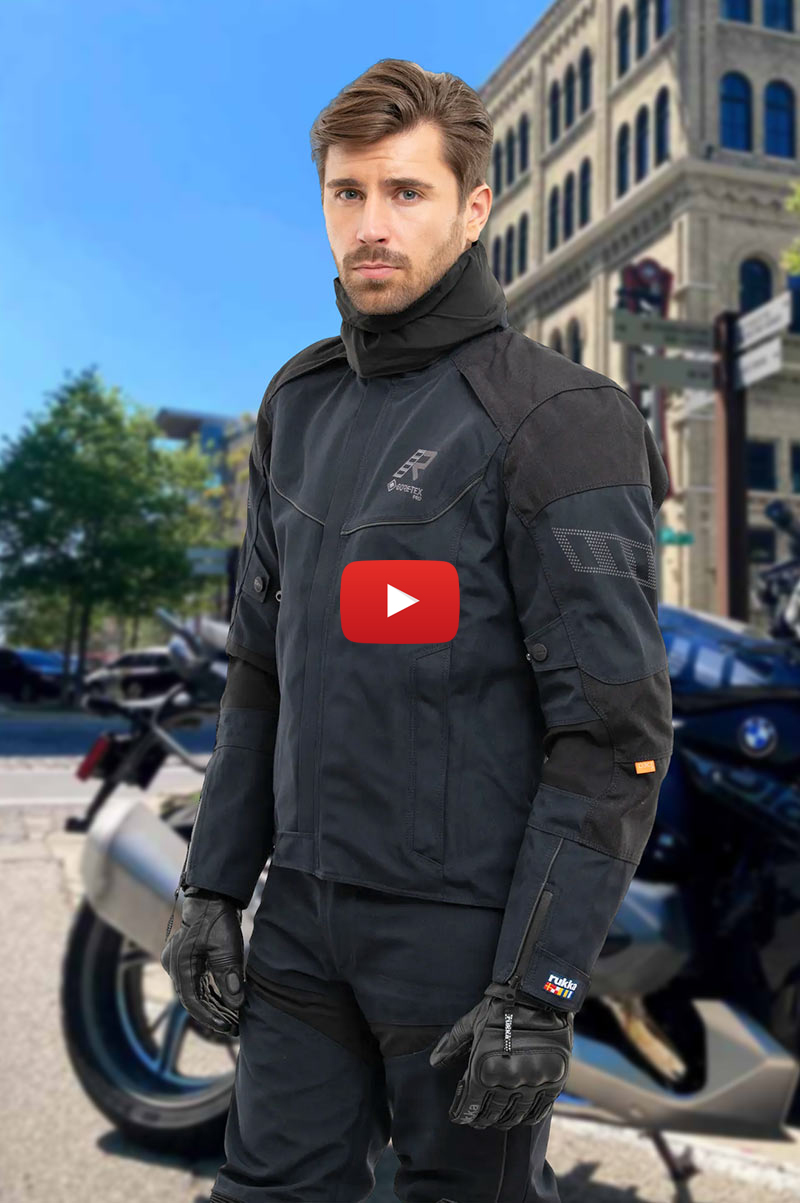
The Voyage-R is to the Nivala what the Pathfind-R is to the Comfo-R; in other words, a re-working without stretch such that it could be rated AA rather than A rated. Given that all the armour in the Nivala makes it more than sufficiently abrasion resistant for road riding, we would probably always choose the Nivala over the Voyage-R, but we are not everybody, of course. So let’s whip through the differences, and confirm what you do and don’t get with the Voyage-R.
The main thing you don’t get with the Voyage-R is the Down-X duck-down inner jacket. Remove this from the equation, and the two jackets are pretty close on price; in fact the Voyage-R is then just £200 cheaper. But for that you lose the stretch fabric, although you do get concertina banding behind the shoulders, and some stretch panels in the arms. You lose a couple of vents on the arms. And you don’t get a chest protector.
But you still get most of the bells and whistles. Neoprene in the collar. The same L2 D3O armour, except for the chest. GTX cuffs. A concealed, storm collar. Vents up the flanks, in the shoulders and in the back. Adjusters. Pockets. And so on.
So as with the Pathfinder-R and the Comfo-R, the choice is very simple. The Nivala is one of the most comfortable, Gore-Tex Pro, 3-layer laminated jackets on the planet. The Rukka Voyage-R jacket has a more abrasion-resistant chassis. But you may never get to benefit from it! Hopefully, you won’t. But we come back to the same issue. When is enough enough. With Rukka’s huge Level 2 armour the Nivala is going to be more abrasion resistant than just about anybody else’s AA jacket, because the armour also plays such an important role when you go down the road.
Ultimately, we can’t make that decision for you, but for us comfort is a crucial consideration when it comes both to riding safely, and to enjoying your ride. And if being comfortable puts you in a better position to avoid an accident in the first place, you might not ever need all that extra abrasion resistance!
To see all Rukka Gore-Tex jackets, click Rukka Gore-Tex jackets.
Share this story
































































